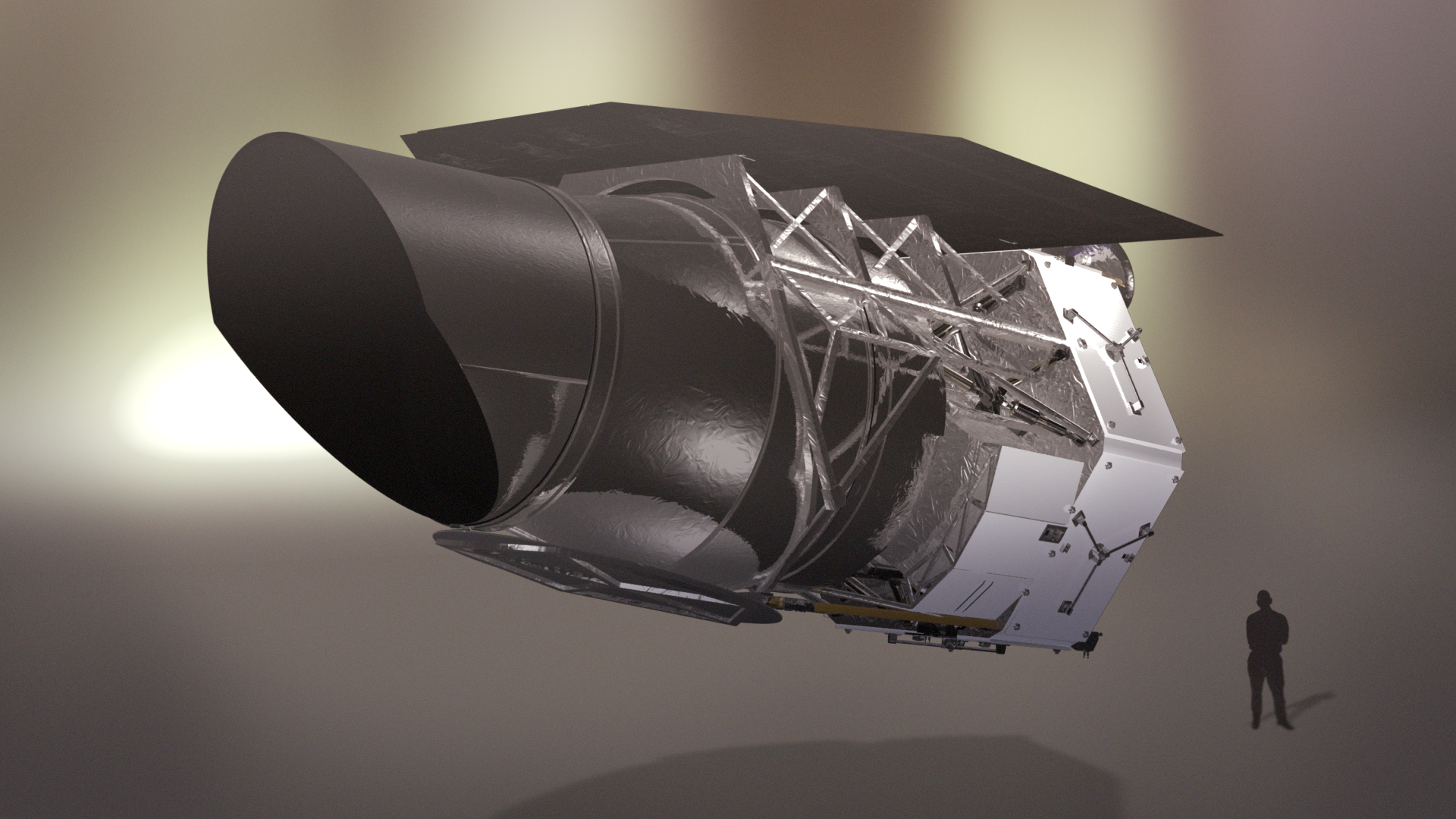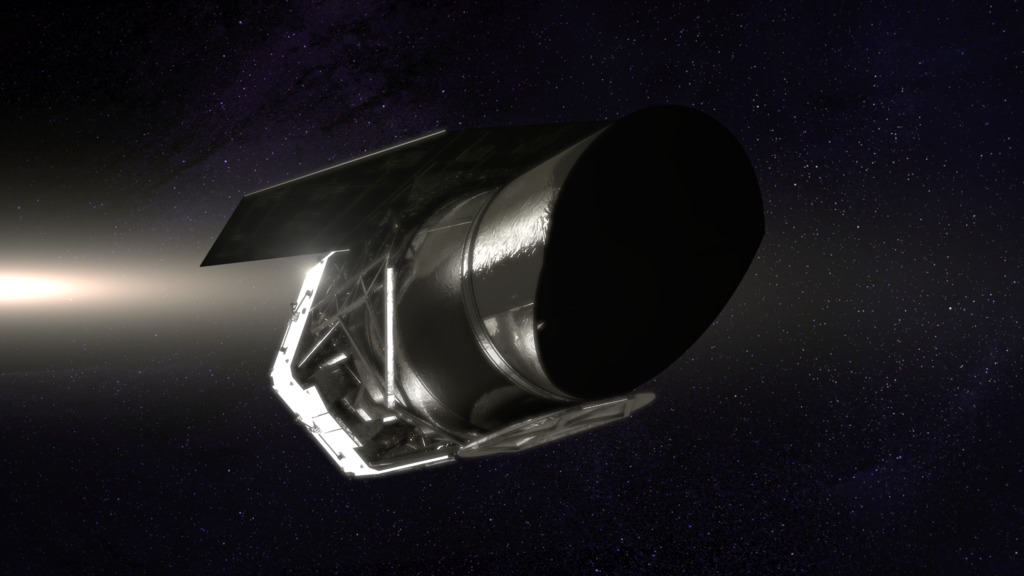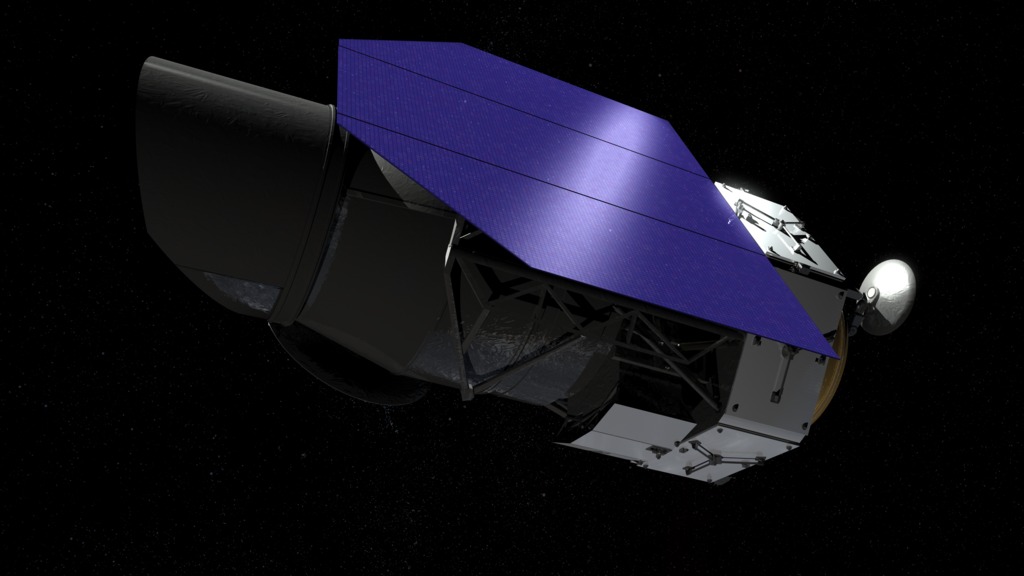WFIRST Updated Spacecraft Beauty Pass Animations
"Beauty pass" animation of WFIRST spacecraft
Animation video and stills based off the Mission Concept Review (MCR) design of the WFIRST spacecraft.
Second beauty pass animation of the WFIRST spacecraft.
Beauty pass fly-over animation of the WFIRST spacecraft reminiscent of the opening scene in Star Wars.
Animation of WFIRST spacecraft at Earth-Sun L2, showing its location relative to Earth.

Composited still of 360 degree rotation.

Composited still of 360 degree rotation.

Composited still of 360 degree rotation.
Credits
Please give credit for this item to:
NASA's Goddard Space Flight Center Conceptual Image Lab
-
Animator
- Chris Meaney (HTSI)
-
Producer
- Scott Wiessinger (USRA)
Missions
This page is related to the following missions:Series
This page can be found in the following series:Release date
This page was originally published on Tuesday, September 20, 2016.
This page was last updated on Monday, January 6, 2025 at 1:41 AM EST.



